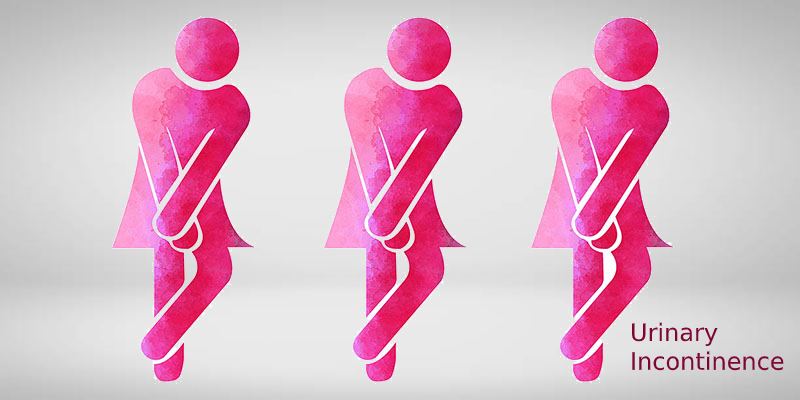Incontinence: Diagnosis and Treatment

9/30/2020
Have you ever found yourself in a situation where you just can’t seem to “hold” it? Are you constantly rushing to a restroom only to never make it in time? Your problem may be much deeper than just having to “go” and actually affects twice as many women as it does men. You may be experiencing urinary incontinence caused by an overactive bladder. Despite many archaic beliefs, urinary incontinence is not a necessary part of aging and can be treated.
What is urinary incontinence?
Urinary incontinence is defined as the loss of bladder control or leakage of urine when it is socially unacceptable. Urine is produced by the kidneys and stored in the bladder. Your bladder has muscles that contract and tighten when you need to urinate. When these muscles begin to tighten, the urine is forced out of your bladder through a tube called the urethra. At this same time, sphincter muscles around the urethra relax to allow the urine to pass through and leave the body.
Incontinence can occur when either the bladder muscles suddenly begin to tighten. This can cause a sudden, strong and unstoppable urge to urinate. In other cases, the sphincter muscles are not strong enough to keep the urethra closed when pressure is placed on the bladder. Thus, increased pressure caused by sneezing, coughing, or laughing can cause the body to leak urine. Leakage can also occur if there is an issue with the nerves that control the bladder muscles and the urethra. Urinary incontinence can mean you release a small amount of urine or a lot of urine at one time.
Why is urinary incontinence more common in women?
This condition affects twice as many women as men due to reproductive events and anatomy that are unique to the female body. Events like pregnancy, childbirth, and menopause can damage the bladder, urethra, and other muscles that support these organs.
Urinary incontinence can happen to women at any age in life, although it is more common in older women. This is more than likely due to the hormonal changes during menopause, and more than 4 in 10 women ages 65 and older have urinary incontinence. Other health conditions can impact the function of the urinary system, such as diabetes, obesity and strokes.
What types of urinary incontinence affect women most commonly?
There are two types of urinary incontinence most commonly found among women:
● Stress incontinence: By far the most common type of urinary incontinence, stress incontinence is also the most common type of incontinence in younger women. Stress incontinence happens when there is stress (pressure) placed on the bladder and the weakened pelvic floor support to the urethra is not strong enough to keep the urethra closed. With stress incontinence, everyday things like coughing, sneezing, or laughing can cause the body to leak urine. Stress incontinence can also be triggered by sudden movements and physical activity.
● Urge incontinence: This urine leakage most commonly happens after a strong, sudden urge to urinate before you can find a restroom. Urge incontinence is more common in older women, but not limited to older women. Urge incontinence can occur when you least expect it, such as during sleep or drinking, hearing or touching running water.
It is also not uncommon for some women to be affected by both stress and urge incontinence. This is referred to as “mixed” incontinence.
What other conditions are associated with urinary incontinence?
Some women with urge incontinence can also have an overactive bladder (OAB). An overactive bladder means you have an urgency to urinate and void frequently, sometimes over 8 times a day. Women with an overactive bladder can have these systems and be dry (OAB dry), or have leakage (OAB wet).
Some womens’ incontinence issues worsen at night, and they may even wet the bed.
How is urinary incontinence diagnosed and treated?
When attempting to diagnose urinary incontinence, your doctor will inquire about any symptoms you may be having and your medical history including:
● How frequently do you use the restroom?
● How and when do you leak urine?
● How much do you leak?
● When did the symptoms begin?
● What medications are you taking?
● Have you ever been pregnant?
● What was your labor and delivery experience like?
Your doctor may also use any of the following tests to determine an accurate diagnosis:
● Urine test
● Ultrasound
● Bladder stress test
● Cystoscopy
● Urodynamics
It is also not uncommon for a doctor or nurse to request you keep a diary for 2 to 3 days to track when you empty your bladder or leak urine. This diary can provide a bit more insight for your doctor or nurse to look for patterns in your symptoms and give hints about the cause and treatments that may work for your specific condition.
After any necessary tests have been conducted, your doctor or nurse will work together to formulate a treatment plan that is tailored to your needs. You may start with steps you can take at home before more involved measures are taken. If these steps do not improve your symptoms, your doctor or nurse may recommend other treatment options depending on whether you have stress incontinence, urge incontinence or both.
It is important to be patient during this time while your doctor or nurse formulates this treatment plan. It may take a month or longer of trying different treatments to begin to see the desired results.
What can I do at home to treat urinary incontinence?
During a doctor’s evaluation, they may suggest a few things you can do at home to help treat any urinary incontinence. For many women, these at-home exercises lessen urine leakage while some see it go away entirely. Some of these steps may include:
● Kegel exercises: If you are suffering from stress incontinence, Kegel exercises to strengthen the pelvic floor may help. Some women have urinary issues due to the pelvic floor muscles being constantly tightened. In this instance, Kegel exercises will not help your urinary incontinence and may cause more problems. Check with your doctor or nurse about your urinary symptoms before trying Kegel exercises.
● Training your bladder: Both men and women can help control overactive bladder or urge incontinence by going to the restroom at set times. You can begin by tracking how often you go each day in a bladder diary. Once you have observed your own schedule, slowly begin adding 15 minutes in between restroom visits. This gradual increase in time between visits trains the bladder to hold more urine before it signals the need to go again.
● Avoid Bladder Irritants: Certain foods and drinks can increase bladder irritability and incontinence. Things to avoid include caffeine, carbonated drinks, alcohol, nicotine, spicy foods, and citrus foods/drinks.
● There are other steps that can be taken including losing weight, improving your eating habits, and quitting smoking. All of these can have a positive impact on your body and how it works.
Urinary incontinence in women is an issue that affects many more women than commonly thought. Whether stress incontinence or urge incontinence, or even a combination of the two, this condition can cause pain and suffering for those affected. Luckily, this condition can be addressed as well as treated to allow patients to resume living a normal, healthy life.

